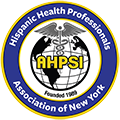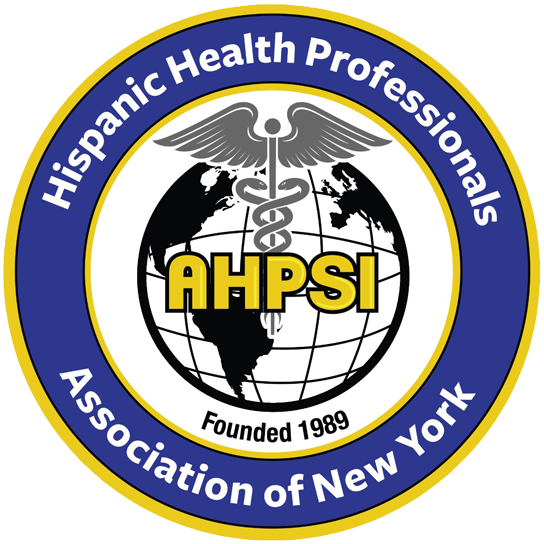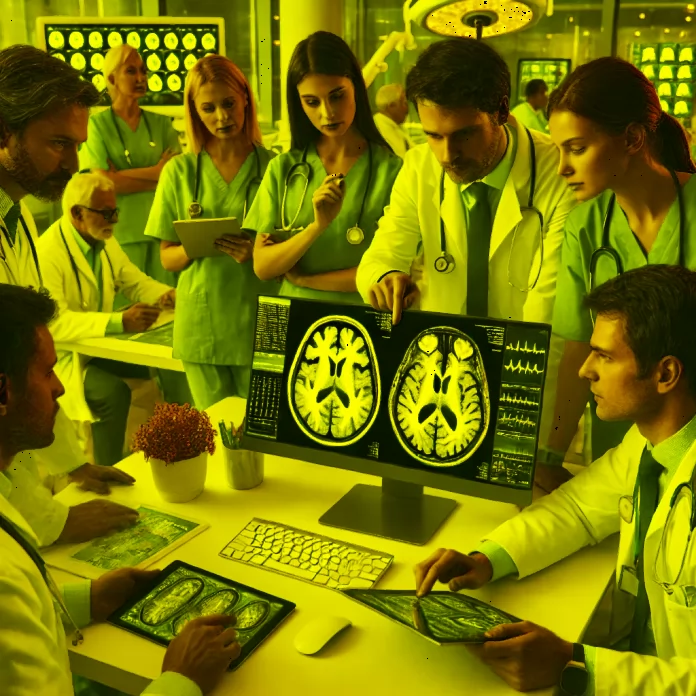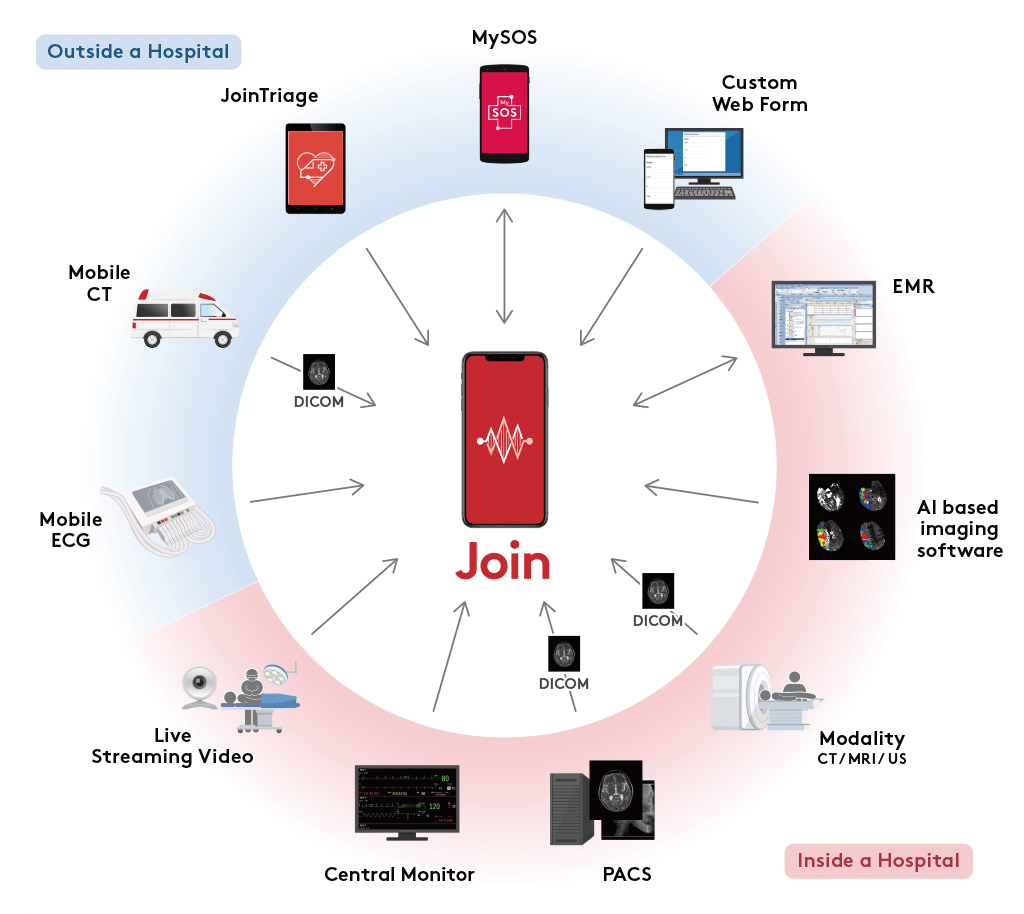Here is a comparison of the pricing and features of stroke management platforms available in the United States, India, and other regions:
Salvando Vidas con Tecnología: Las Principales Aplicaciones para Detectar y Tratar ACV:
Para su consideración en el momento de tomar la decisión de que aplicación usara en le manejo de los accidentes cerebro vasculares, aquí presentamos un listado de las 10 principales con sus características, el precio para su implementación puede variar.
1.Join Descripción: Una de las plataformas más usadas para la detección y el tratamiento de ACV. “Join” facilita la comunicación en tiempo real entre médicos, permitiendo el análisis y diagnóstico rápido a través de imágenes médicas (CT, MRI). Ayuda a identificar a los pacientes que están desarrollando ACV y permite coordinar el tratamiento adecuado en el menor tiempo posible.
Uso: Diagnóstico rápido y colaboración remota para el tratamiento de ACV.
Equipos: Compatible con dispositivos móviles y equipos de imagenología hospitalaria.
Fuente: [Join](https://www.joinsolutions.com)
- Viz.ai (United States)
Pricing: Viz.ai offers AI-driven stroke management solutions, particularly useful for acute care. Pricing depends on the hospital’s size and the number of users but can be around $10,000 to $50,000 annually for smaller hospitals. It supports care coordination across neurology and cardiology for post-stroke follow-up, helping to improve patient outcomes. The platform offers cloud-based access and is used by over 1,500 hospitals globally.
Features: AI-powered detection of large vessel occlusion (LVO), CT perfusion imaging, automated communication between specialists (neurology and cardiology), and a mobile app for seamless access. It focuses heavily on improving patient access to critical interventions like thrombectomy
- Brainomix 360 (Europe and the United States)
Pricing: Similar to Viz.ai, the cost for Brainomix can vary significantly, depending on the size of the hospital and usage, with estimates between $15,000 and $60,000 per year. Brainomix has FDA clearance for its stroke care system and is widely used in Europe and the U.S.
Features: Brainomix 360 offers real-time interpretation of brain scans using AI to support treatment decisions. It helps reduce door-in-door-out (DIDO) times by up to 50 minutes and increases the number of patients receiving mechanical thrombectomy. The system also integrates with existing hospital workflows to optimize stroke management【
- Medtronic and Qure.ai (India)
Pricing: Platforms like Qure.ai, in collaboration with Medtronic, are available in India and tend to have lower implementation costs compared to U.S. platforms due to differences in healthcare infrastructure. Though exact pricing isn’t always publicly available, it is often more affordable, potentially ranging from $5,000 to $25,000 annually for smaller hospitals.
– **Features**: Qure.ai focuses on AI-powered stroke detection and care in resource-limited settings. It leverages CT scan analysis for early detection of stroke symptoms, automating the triage process. This is critical in countries like India, where access to specialized stroke care may be limited, and timely intervention can significantly improve outcomes【11†source】.
5.ABAStroke (Poland and India)
Pricing: ABAStroke, a mobile-based platform for post-stroke rehabilitation, is relatively affordable. Pricing can range from $2,000 to $10,000 annually depending on the number of users and features activated.
- FAST.AI, esta aplicación es conocida por utilizar inteligencia artificial para analizar imágenes de TC cerebral y detectar signos tempranos de accidente cerebrovascular isquémico.
7.Stroke Riskometer: Esta aplicación, desarrollada por la Organización Mundial del Accidente Cerebrovascular, ayuda a evaluar el riesgo individual de sufrir un accidente cerebrovascular y proporciona recomendaciones para la prevención.
8.Stroke Patient: Una aplicación diseñada para el seguimiento y rehabilitación de pacientes que han sufrido un accidente cerebrovascular, ofreciendo ejercicios y monitoreo del progreso.
9.NIH Stroke Scale: Esta aplicación, basada en la escala del Instituto Nacional de Salud de EE.UU., ayuda a los profesionales de la salud a evaluar la gravedad del accidente cerebrovascular y monitorear los cambios en el estado del paciente.
10.RapidAI Descripción: Esta aplicación se centra en el análisis de imágenes cerebrales para detectar isquemia, hemorragias, y oclusiones de grandes vasos. También permite la gestión del tratamiento y facilita el seguimiento del paciente a lo largo de su recuperación.
Uso: Diagnóstico y seguimiento de pacientes con ACV.
Equipos: Computadoras y equipos de imagenología.
Fuente: [RapidAI](https://www.rapidai.com)
Es importante señalar que estas aplicaciones son herramientas de apoyo y no sustituyen el juicio clínico de los profesionales de la salud. Además, su disponibilidad y uso pueden variar según la región y las regulaciones locales.
¿Por qué estas aplicaciones son importantes?
Estas aplicaciones están transformando el manejo de ACV al permitir un diagnóstico más rápido y preciso, lo que puede salvar vidas mediante la intervención temprana y un seguimiento adecuado.
AHPSI, Septiembre, 2024
732-277-9640
info@ahpsi.org






